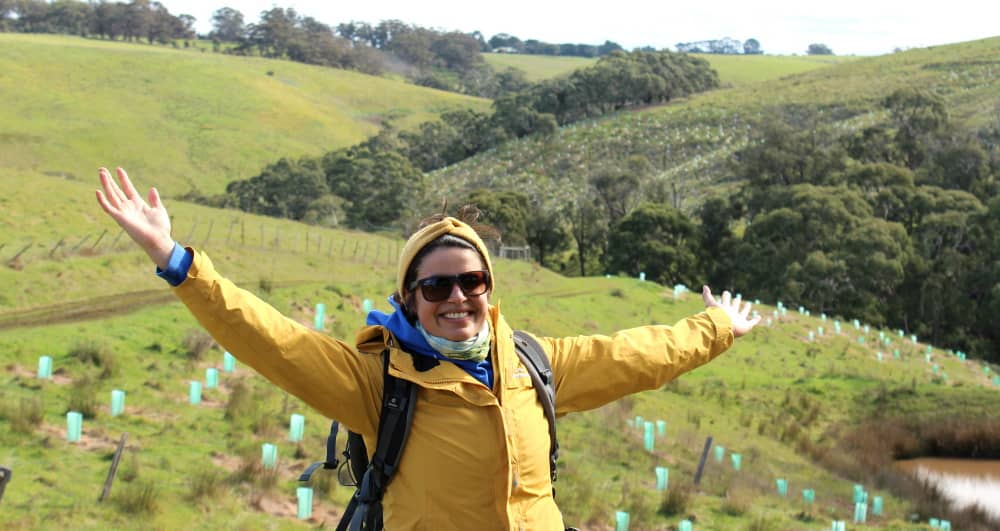by Janine Duffy
06.00am It’s still dark in Melbourne, Australia in winter. Outside the Little Wattlebirds clear their throats as a prelude to singing. No, actually, that is singing. Hard to tell whether that ridiculous sound is a song or a condition.
This tree planter’s day started a couple of days ago. Choosing, then packing the trees into mixed boxes, giving them a dose of seaweed solution and a good watering. A tray/box of trees usually holds about 50, and on a normal tree planting day Koala Clancy Foundation plants 500-1000 trees, so that’s a lot of boxes.
The neighbours wonder what we’re growing, and quietly assume it must be legal if it’s in the front yard.
The preparation for this planting day started nine months ago, in November 2019 – when we assessed the site, identified the remnant vegetation, drew maps and checked EVCs*. This quantity of trees need to be ordered well in advance, as the nursery has to grow them from seed. Our plants are local provenance, specific to that region and not popular garden plants. You can’t pick these up from Bunnings a week before.
*EVC: Ecological Vegetation Class – an overview of the native plant species & structure of all sites throughout Victoria . See Notes & References below
But back to my day…. Real oat porridge cooked in a saucepan, with banana & sultanas, and coffee, while the poor Little Wattlebirds clear their throats for the hundredth time.
Boxes of koala trees and gumboots are in the back of the ute already, so it’s just a matter of making thermoses of fresh coffee, packing some lamingtons, picking up lunch and we’re on our way.
Early mornings on the Victorian Volcanic Plain in winter are sparkly crystal – the grasses are green-gold sometimes touched by frost, the big sky is blue, pink and gold, the You Yangs hills are navy blue. Frequently we are the only vehicles on the road, but we pass farmers on big machines in paddocks – they are early risers too.
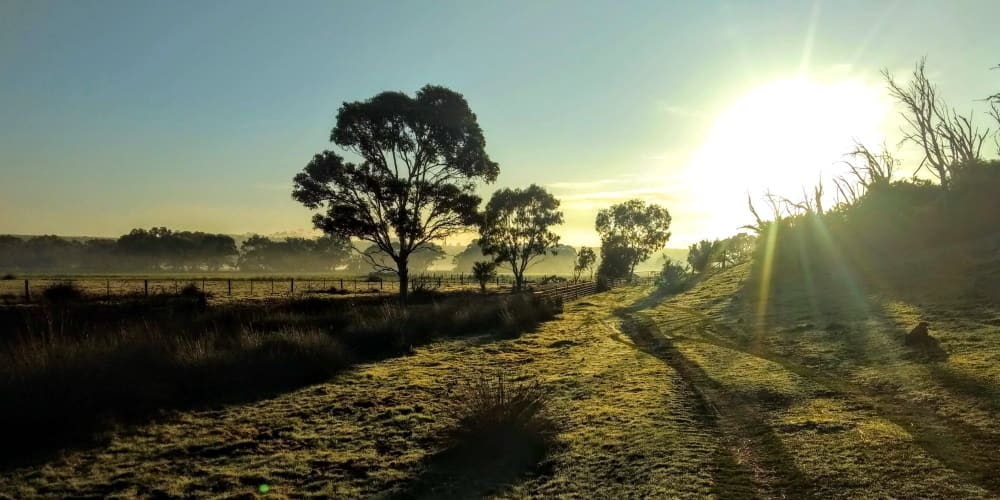
Usually we arrive an hour before the group, but in these times of COVID-19 we are ‘the group’. It’s just us, a group of 6 – 10 Koala Clancy & Echidna Walkabout staff, doing the planting that 30 people would do. It’s taking us longer, but we are quick – experience does count for something.
Trees must go beside holes, with two stakes and a tree guard. We find that it works best to get all this done first, so nothing slows the tree planters when they get going.
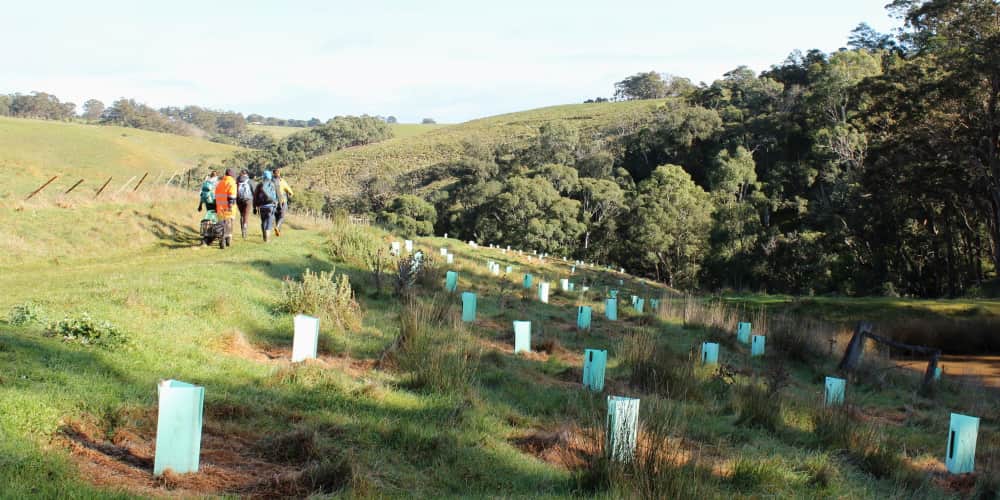
Maria & I do the tree selection – its a job that requires an intimate knowledge of the best site for each plant. These koala trees have been chosen based on a macro-site, but now we are placing them in a micro-site: what colour & density is the soil in the hole? Is the soil wet or dry? What’s the aspect? What other plants are around, and what did I put in the hole 3 metres away?
But often it comes down to practicalities: what do I have left in my box? “This really is a good site for a Blackwood, but I don’t have any left. Walk back up the hill for another mixed box…. Hmmm, you know what, I think a Yellow Gum will do just nicely! ”
This is why we carry mixed boxes with a selection of Australian native species – its tiring carrying 50 trees under one arm while walking up and down hills. Going back and forth is time consuming – it’s much quicker to do a patch all in one go.
Nearby, Caz & Jess are placing a tree guard at each hole, followed closely by Jordan & Brett with hardwood stakes. Bundles of 50 stakes are very heavy, and don’t go far – 2000 stakes (40 bundles) are required for 1000 trees. We try to bring them as close to the site as possible.
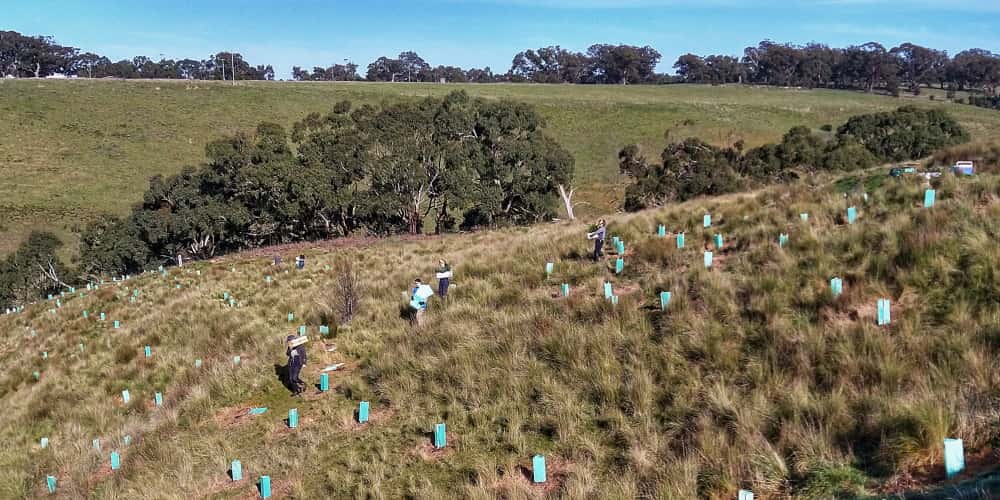
Earlier, in a vehicle, Bart dropped stakes at ‘staging posts’ along the length of the site. But sometimes we can’t get a vehicle very close, and then there’s a lot of heavy lifting. Jordan, Brett, Dan, Roger, Hayley & Maria don’t need their gym membership at the moment (not that they could go to a gym now anyway in COVID lockdown).
At some point the sweet sweet sound of hammering begins, and we know we’re on the home stretch. Why hammering? In our area, all planted trees have to be guarded from browsing animals, using a welded corflute tree guard, held in place by two hardwood stakes, hammered hard into the ground. If we don’t, the rabbits, Swamp Wallabies and Eastern Grey Kangaroos will think Uber Eats have been by, delivering their dream takeaway.
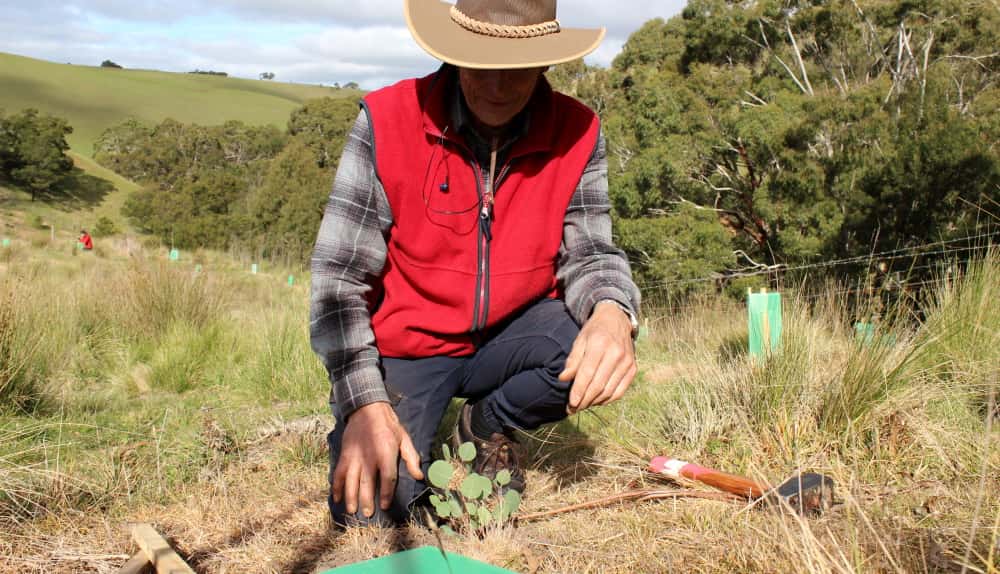
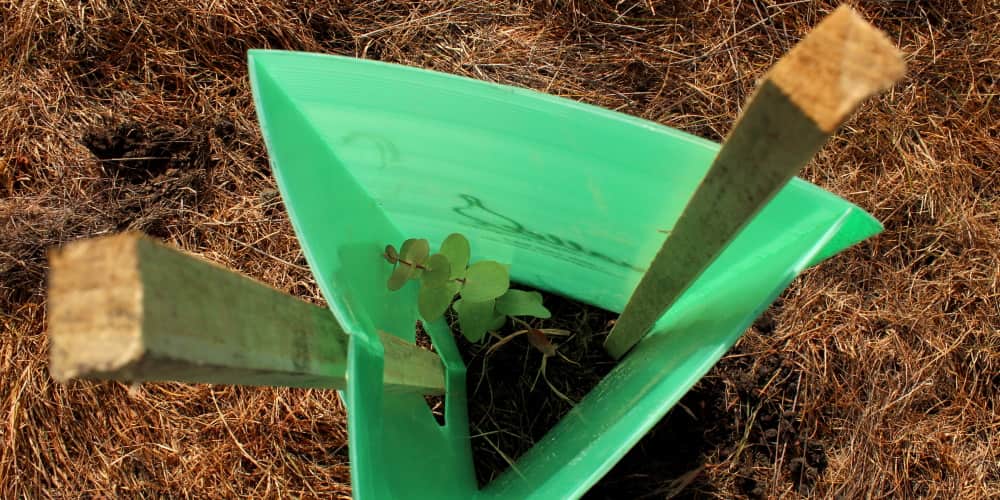
Bunjil – Wedge-tailed Eagle – flies over. She is silent, but she is usually accompanied by the screeches of Sulphur-crested Cockatoos, clinking of Grey Currawongs and alarm-calling of Yellow-faced, White-naped & White-plumed Honeyeaters. On other sites it was an Australian Hobby, Nankeen Kestrel or Little Eagle, but Bunjil appears at most sites at some time.
So a planter arrives at a hole, picks up a little baby tree, removes it from it’s pot and pops it into the ground. Care is needed at this stage, as a plant placed too low or too high in the hole will suffer. The tree’s natural ground level in the pot needs to be it’s natural ground level in the ground to give it the best start. It is back-filled with dirt, then the tree guard is assembled over it, two stakes are hammered in to hold the tree guard in place. Watch a speedy version:
..
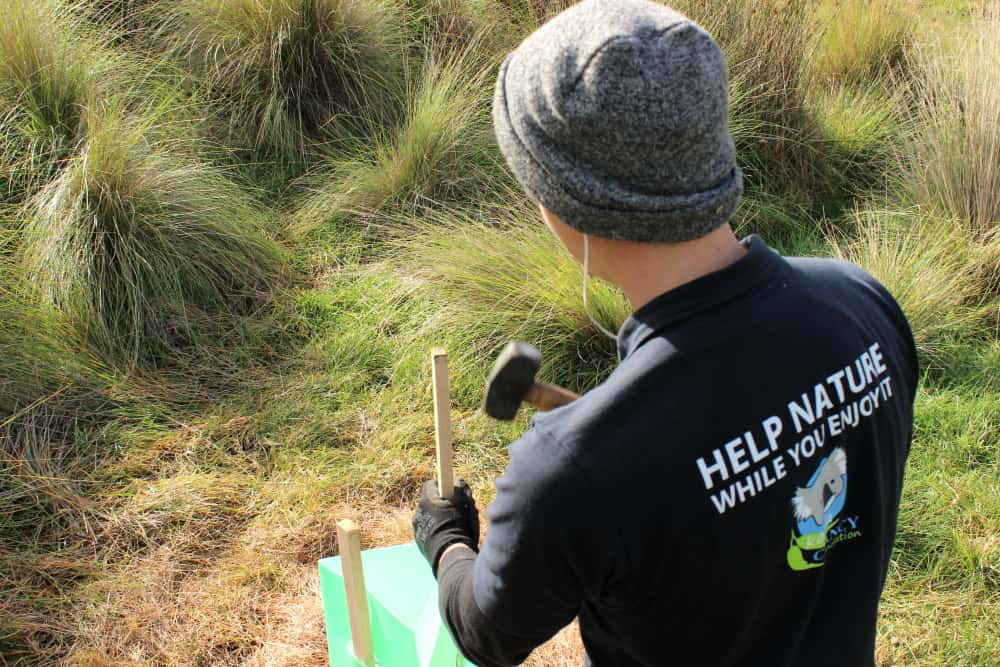
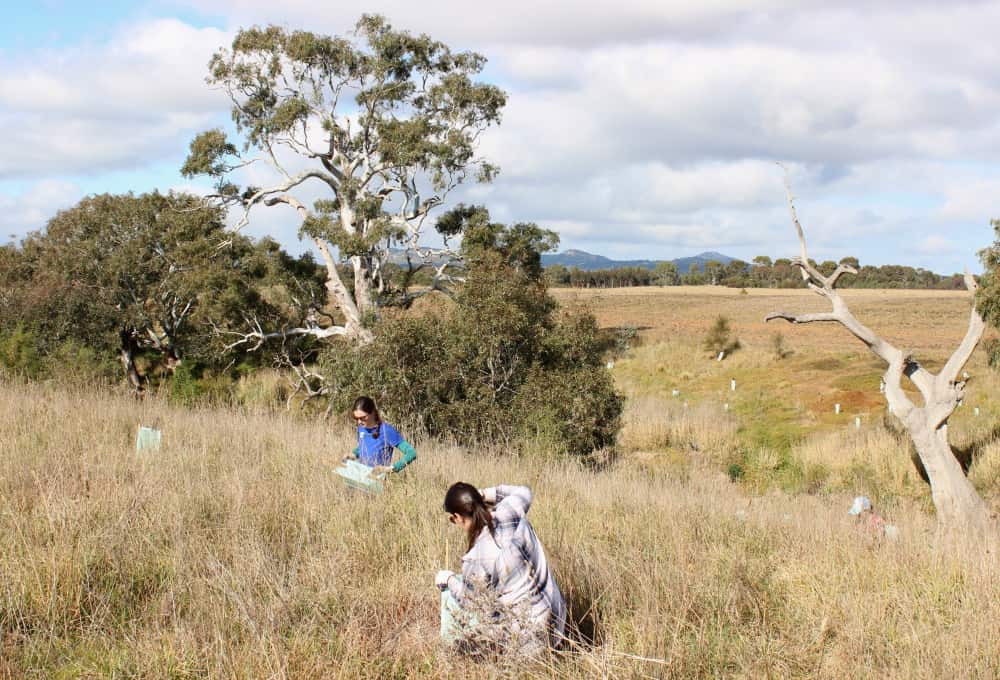
Planting a tree this way takes about 1-2 minutes. Once we start planting in earnest, we can rip through trees fast – most of us do around 50 an hour (this is where our experience really shows – we don’t expect community groups to plant this fast. We usually plan for 30 trees an hour from inexperienced volunteers).
Tree guards need to stand under high winds, flooding rains and animal attack for 2 years. If they fall or become loose they can shred the tree, or leave it vulnerable to rabbits. In 2 years we will return to remove them and use them at another site.
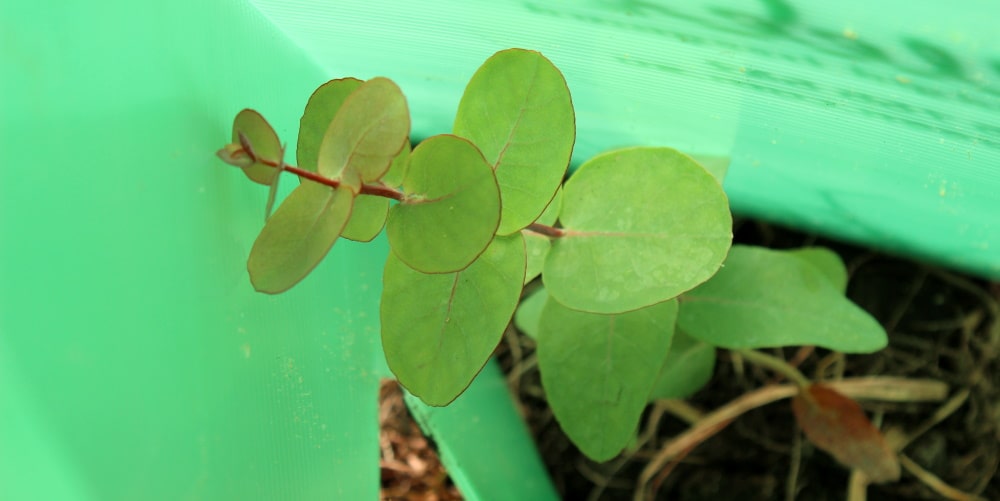
At around 11 Maria calls out for a morning tea break. We have taken morning tea on the sides of steep hills in the rain, all sitting on Serrated Tussocks (only good think about this weed – makes a great cushion); in a warm grassy paddock, hot coffee handed over a barbed wire fence; inside a hangar beside a famous small plane; in a working shearing shed scented by sheep’s wool. Lamingtons made by the Geelong bakery Routleys are highly recommended to keep the energy up, but we’ve also had home-made scones, muffins and brownies and even vegetable soup provided by our wonderful landowners.
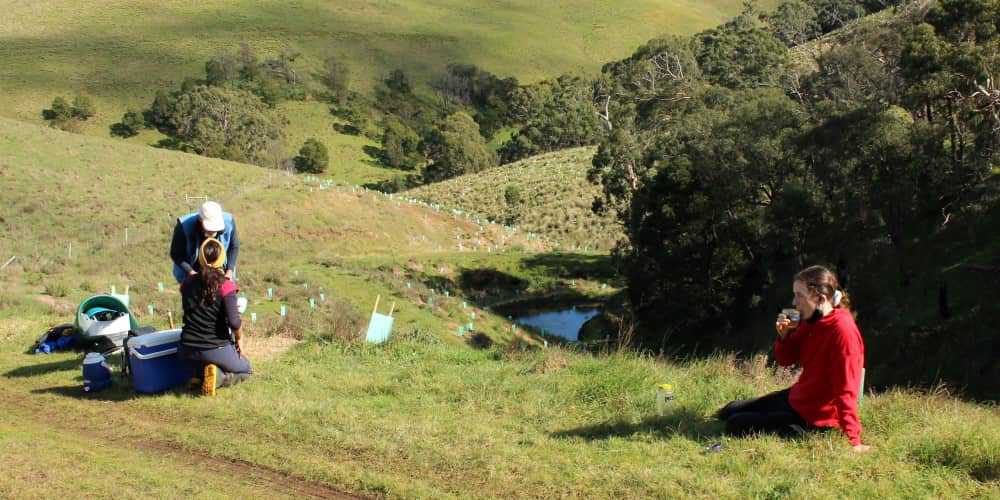
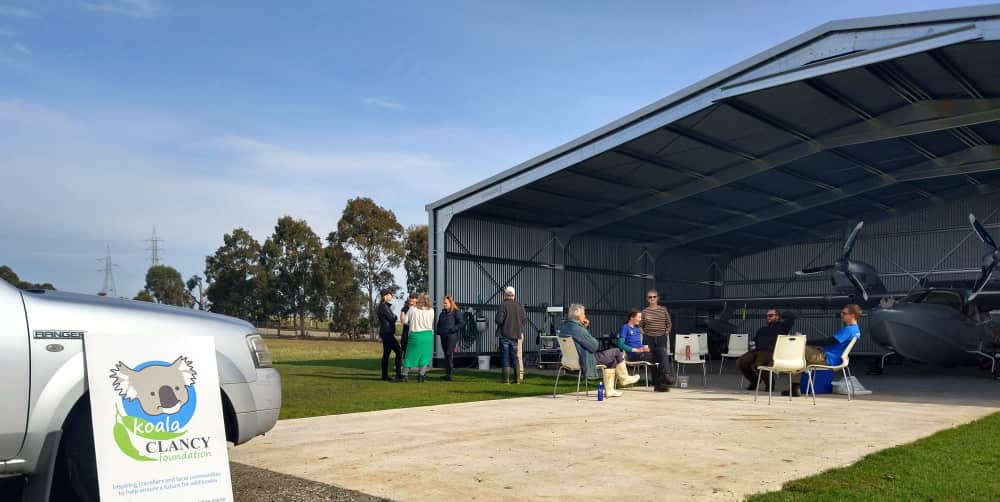
Getting started again is not difficult. Planting days are in winter and usually cold, but planting trees warms you up fast. Tree planters in southern Australia start off wearing five layers, which get peeled off and hung over fence posts at regular intervals throughout the morning. You can follow a planter’s progress from the items of clothing strewn along a path of new trees.
Stopping for a break, much as it is appreciated, reminds you how cold the day is. Planting is preferable to getting re-dressed in all that clobber, just to remove it again.
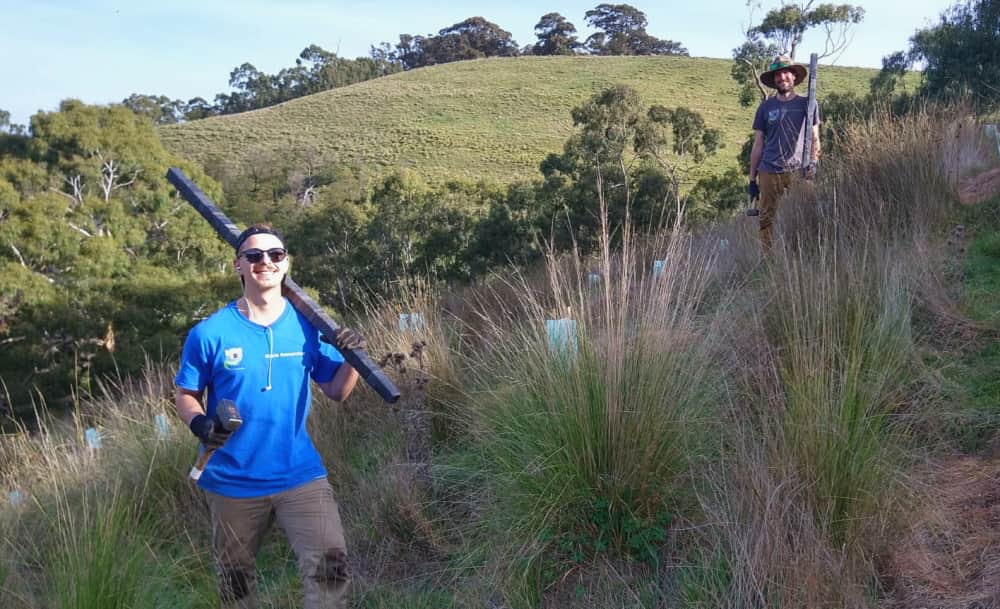
On a wet day, I usually switch my planting gloves at this time. The first pair are sodden and the fingers have swelled to stubby sausages, caked in mud. You have to remember that touching your face will leave a muddy streak for all to laugh at later.
Between morning tea and lunch we eat plants up like a Pacman – the wave of green tree guards approaches, then swamps the finish line. Then comes the happiest question you’ve ever heard (maybe I exaggerate, but at the time it’s a really really happy sound):
From Amy: “Are there any more?”
“Yes, I’ve got a few over here,” replies Alison. At this stage you know the day is nearly done.
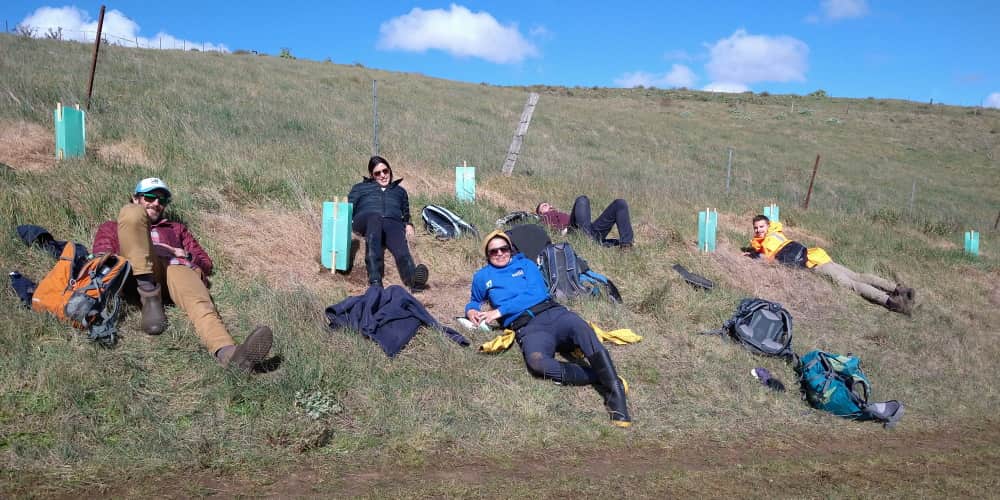
After a healthy lunch of sandwiches, which are consumed in vast quantities, more lamingtons and coffee, we pack up and head off. At this stage we all feel surprisingly good. But later…
That night, bedtime arrives rather early. I just manage to pop the filthy gloves in for their first soak (it will take several water changes before these bad boys are clean). The Little Wattlebirds clear their throats for the last time and I am fading.
Sleep is heavy, waking is difficult and the bed feels like a magnet, pinning your legs and arms (which are made of steel, of course). This is what it’s like to be a Koala tree planter.
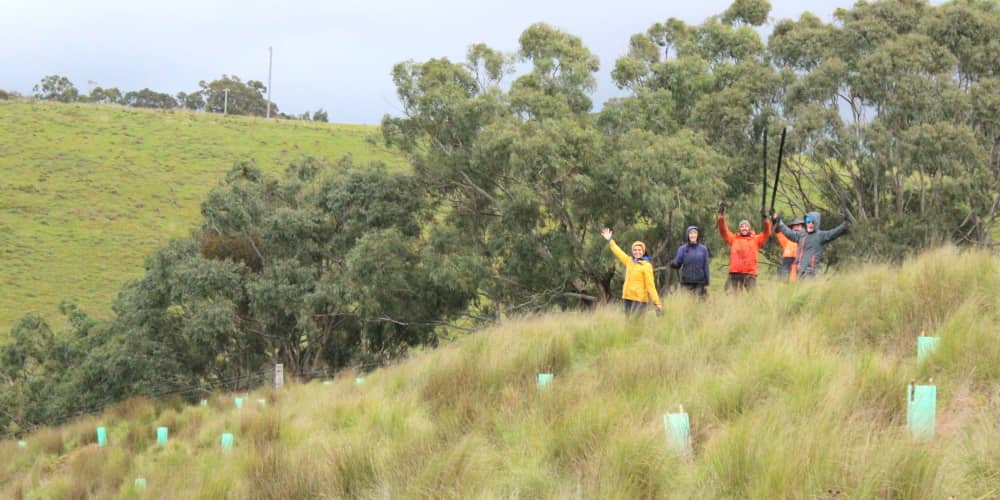
It’s a dreamless, satisfied sleep. The world doesn’t look bleak at all, it looks rosy and hopeful.
…
Koala Clancy Foundation plant trees to help koalas cope with climate change, which is reducing their viable habitat near Melbourne. Koala trees only take 4 to 7 years to grow big enough to support a koala.
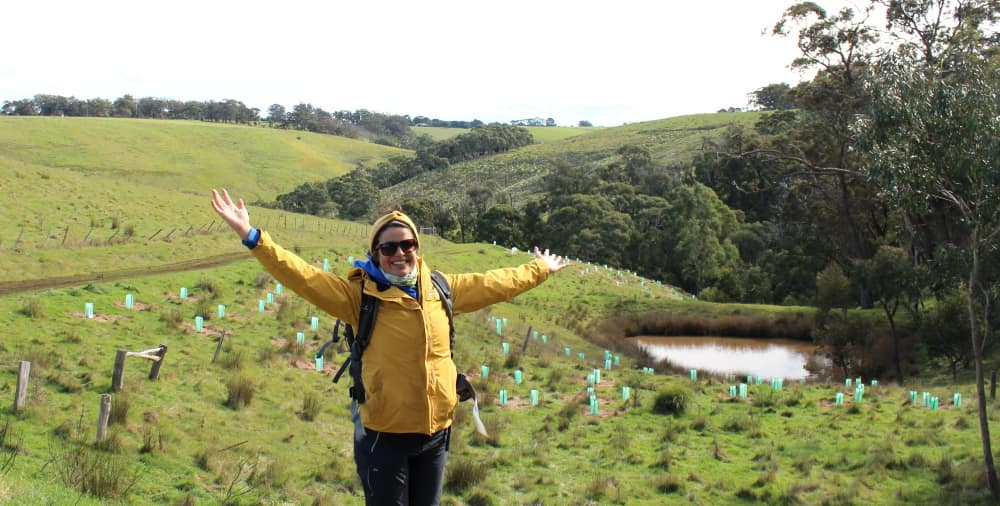
..
Thanks to our sponsors & major donors, none of this could happen without you:
Echidna Walkabout Nature Tours, Australia
Euca Laundry Products, Australia
Eucalyptus Real Estate, USA
Hidden Secrets Tours, Australia
Swain Destinations, USA & Australia
TAP Wines, Australia
15 Trees, Australia
Spinifex Gum, Australia
Steppes Travel, UK
Pat T & Tony M, USA
Leslie Lava, USA
Erica G, Australia
Chris D, Australia
Tanya Loos, Australia
David Francis-Foreman, Australia, Koala Clancy Foundation Board Member
Thanks to our farmers & landowners:
Jodie & Glenn Musto; Eric S, Anne & Michael Smith, Dominic & Caroline C, and a special mention to Lloyd Stanway from Melbourne Water, and Matt Lamanna from Kingfisher Environmental Services for your hard work.
..
NOTES & REFERENCES:
Find a list of EVCs here: https://www.environment.vic.gov.au/biodiversity/bioregions-and-evc-benchmarks

